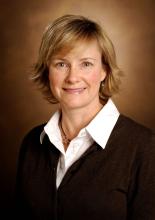AI in idiopathic pulmonary fibrosis
The AI model that Dr. Chattopadhyay and collaborators developed had an 88% accuracy in predicting IPF. The model, known as the zero-burden comorbidity risk score for IPF (ZCoR-IPF), identified IPF cases in adults age 45 and older 1-4 years sooner than in a variety of pulmonology practice settings.
The model accounted for about 700 different features of IPF, Dr. Chattopadhyay said, but it deviated from standard AI risk models in that it used a machine learning algorithm to extract disease features that aren’t well understood or even known. “We do not know what all the risk factors of IPF are,” he said. “People who don’t have all the risk factors still get IPF. So we have to step back from the raw EHR data from where the features are being generated automatically, and then you can apply standard ML tools.”
Researchers at Nagoya University in Japan also reported on an AI algorithm for predicting IPF that used 646,800 high-resolution CT images and medical records data from 1,068 patients. Their algorithm had an average diagnostic accuracy of 83.6% and, they reported, demonstrated good accuracy even in patients with signs of interstitial pneumonia or who had surgical lung biopsies (Respirology. 2022 Dec 13. doi: 10.1111/resp.14310).
Chat GPT: The next frontier in AI
Dr. Tseng last year led a group of researchers that fed questions from the United States Medical Licensing Exam to a ChatGPT model, which found it answered 60%-65% of questions correctly (PLOS Digit Health. 2023 Feb 9. doi: 10.1371/journal.pdig.0000198). As Dr. Tseng pointed out, that’s good enough to get a medical license.
It may be a matter of time before ChatGPT technology finds its way into the clinic, Dr. Tseng said. A quick ChatGPT query of how it could be used in medicine yielded 12 different answers, from patient triage to providing basic first aid instructions in an emergency.
Dr. Tseng, who’s pulmonology practice places an emphasis on virtual care delivery, went deeper than the ChatGPT answer. “If you’re a respiratory therapist and you’re trying to execute a complicated medical care plan written by a physician, there’s a natural disconnect between our language and their language,” he said. “What we have found is that GPT has significantly harmonized the care plan. And that’s amazing because you end up with this single-stream understanding of the care plan, where the language is halfway between a bedside clinician, like the respiratory therapist or nurse, and is also something that a physician can understand and take the bigger sort of direction of care from.”
Barriers to AI in clinic
Numerous barriers face widespread adoption of AI tools in the clinic, Dr. Tseng said, including physician and staff anxiety about learning new technology. “AI tools, for all purposes, are supposed to allay the cognitive burden and the tedium burden on clinicians, but end up actually costing more time,” he said.
Health care organizations will also need to retool for AI, a group of medical informatics and digital health experts, led by Laurie Lovett Novak, PhD, reported (JAMIA Open. 2023 May 3. doi: 10.1093/jamiaopen/ooad028). But it’s coming nonetheless, Dr. Novak, an associate professor of biomedical informatics at Vanderbilt University Medical Center in Nashville, Tenn., said in an interview.
“In the near future, managers in clinics and inpatient units will be overseeing care that involves numerous AI-based technologies, including predictive analytics, imaging tools, language models, and others,” she said. “Organizations need to support managers by implementing capabilities for algorithmo-vigilance.”
That would include dealing with what she called “algorithmic drift” – when the accuracy of an AI model wanes because of changes in the underlying data – and ensuring that models are unbiased and aren’t used in a way that contributes to inequities in health care. “These new organizational capabilities will demand new tools and new competencies,” she said. That would include policies and processes drawing guidance from medical societies for legal and regulatory direction for managers, staff training, and software documentation.
Dr. Tseng envisioned how AI would work in the clinic. “I personally think that, at some time in the near future, AI-driven care coordination, where the AI basically handles appointment scheduling, patient motivation, patient engagement and acts as their health navigator, will be superior to any human health navigator on the whole, only for the reason that AI is indefatigable,” Dr. Tseng said. “It doesn’t get tired, it doesn’t get burned out, and these health navigation care coordination roles are notoriously difficult.”
The physicians and researchers interviewed for this report had no relevant relationships to disclose.

